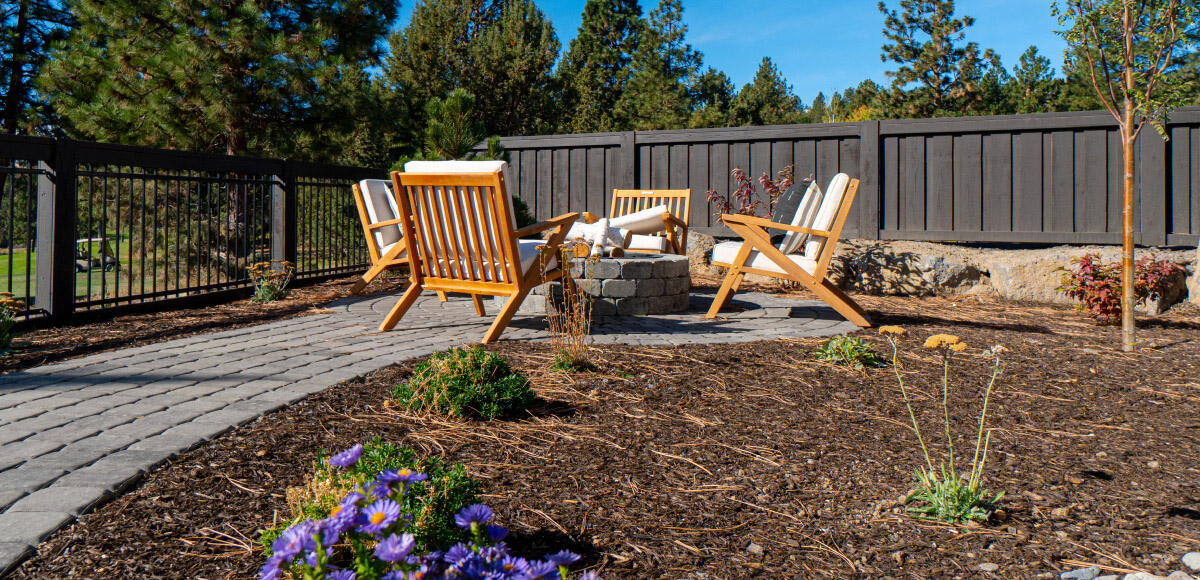
Xeriscaping 101: What It Is and How to Maintain It
Contrary to popular belief, “low maintenance” and “high quality” don’t have to be mutually exclusive. Pahlisch Homes, and Pahlisch communities, strike the perfect balance between convenience and luxury. This includes master-planned community amenities, community management, and xeriscaping throughout our properties. As part of our ongoing commitment to supporting our homeowners, today we’re deep-diving into how to maintain your xeriscape yard.
First of All, What Is Xeriscaping?
Whether or not you’re new to the Pahlisch family, you may be wondering what xeriscaping is. Part of the word comes from the Greek word xeros meaning dry, combined with “landscaping.” This “dry landscaping” technique is exactly what you might think—landscaping that requires little or no irrigation. Typically, a xeriscape yard includes drought-resistant plants that thrive in more arid environments (like that of the high desert).
One common misconception when people hear the term is that it means “zero” landscaping. While minimalist, these yards are full of interesting flora that’s no-fuss and durable.
Main Benefits of this Low-Maintenance Landscaping
On the surface, the main benefit of xeriscaping is its convenience. Just imagine what you could do with the extra time you’d spend on yard maintenance—an extra round on the green or more runs on Bachelor, maybe. In addition to this, other benefits include:
Great for desert climates
Because this type of landscaping requires little or no irrigation, it thrives where there is little water to spare—both in drier climates or ones that experience extended drought seasons. We build homes throughout the varied climates of Oregon and Washington, so it’s important to utilize durable, native plants in our landscaping. Native plants are also crucial parts of the local ecosystem so incorporating them in landscaping can continue to benefit pollinators and local bird species.
Uses native plants
Native plants not only seamlessly fit into a landscape; they also last longer than non-native plants, which can save you money in the long run. Oregon and Washington are home to unique and beautiful native flora and are popular in xeriscaping techniques. Popular xeric plants include cacti, juniper, lavender, dry-loving perennials like allium and achillea (yarrows), and various wildflowers.
Lawn reduction
The gold standard in a low-maintenance yard is a reduced lawn size. Grassed lawns can be tricky to maintain and keep green—even missing a day or two can set them back and kill their grass. By reducing to a xeriscape yard, homeowners can enjoy a beautiful yard that complements their home without the hassle.
Efficient irrigation
Xeriscaping uses the minimal amount of water necessary to keep plants thriving. Setting up a drip irrigation system underground can allow for a slow water solution to hydrate native plants without being wasteful.
Did we mention convenience?
One of our goals when creating master-planned communities is to improve our homeowners’ way of life. With less time worrying about your lawn (and water bill along with it), you can take advantage of your community amenities, explore the local area, and spend time with family and friends.
How to Best Maintain Your Xeriscaping
At this point, you may be wondering how to keep your xeriscape yard happy and healthy. While they’re not completely zero maintenance, these tips will help keep your yard beautiful and worry-free.
Understand your landscaping zones
The landscaping zones of a xeriscape yard are broken down into the following:
Oasis zone: This zone is most likely to receive water runoff from the top of the roof and gutters if it rains. Planting flora that needs more water here than others sets your xeriscape yard up to use space and water most efficiently.
Transition zone: This zone surrounds the oasis zone. Plants here need less water, but still more than the arid zone.
Arid zone: This zone is farthest from the house and should feature drought-resistant plants, as it’s an area that will get little to no irrigation.
Understand climate and plant needs
The Plant Hardiness Zone Map from the USDA is a great way to see what types of plants will do best in your yard. In addition to tracking rainfall levels (or lack thereof), this will help you decide which plants will thrive in your area. When in doubt, we always defer to a local plant nursery. These local plant experts have the inside scoop on which native plants are ideal for xeriscaping.
Establish proper soil care
Just as a house needs a solid foundation, a landscaped yard needs healthy soil. To ensure your soil remains sufficient for xeric plants, perform regular soil tests to check that it consists of enough organic matter. If it doesn’t, you’ll have to add more. What’s more, understanding the pH level requirements for your plant ensures you provide them with the right environment to thrive.
Consider mulch
Mulch is a layer of organic material applied to the surface of your soil. It’s perfect for retaining moisture and preventing weeds, which is optimal for a xeriscape yard. But it’s also a great long-term solution. As it decomposes, the organic matter supports your xeric plants.

Enjoy the Beauty and Convenience of Xeriscsaping From Your New Pahlisch Home
Xeriscaping is a fantastic option for those wanting worry-free and convenient living in their Pahlisch Homes community. In addition to being beautiful and water-smart, a xeriscaped yard is a great way to utilize native plants, reduce lawn sizes, and take advantage of desert climates. Best of all, with a little knowledge of soil health, plant types, and efficient irrigation these easy-to-maintain yards stay beautiful for years to come. If you’re interested in seeing low-maintenance homes for sale with xeriscaping, visit us here to speak to a New Home Specialist.
Be sure to subscribe to our newsletter, Front Porch, for more tips like this and like/follow/share us on social media.

